- Do you subscribe to Dharma Dog Training’s Newsletter? You should.
- A Unique Campaign from The Humane Society of the United States
- Rabid bats in Omaha- Stay safe, prepared with these tips
- Springtime Activities in Omaha
- Mill Dog Monthly from Bailing Out Benji
- World Spay Day, Legislative Alert in Nebraska
- Attend the Nebraska Rescue Council’s monthly meeting this Saturday
- Five Hard-to-Ignore Reasons to Adopt!
- Paws in Pink to Benefit Breast Cancer Foundation
- VCA, Inc. Acquires MidWest Vet Specialists from Kansas State University
What Are The Signs Of A Well-Adjusted And Happy Pet?

Have you ever wondered whether your dog or cat is well-adjusted and happy? Pets cannot tell us if they are happy, but they can communicate in other ways. Some key signs they often display will tell you if your pet truly enjoys their life.
Relaxed body language and facial expressions are often good indicators that your pet is happy and content. Happy dogs, for example, look like they are smiling and bursting with pure joy. Carefree dogs and cats also exhibit playful behavior and have the energy to participate in physical activity.
Dogs and cats can show their zest for life differently, as cats perform functions like purring and “making biscuits,” and dogs wiggle their tails to express their own special brand of enthusiasm and sheer delight. In this article, you will discover the traits of a happy and well-adjusted pet.
Signs Of A Well-Adjusted And Happy Pet
Your canine or feline companion may demonstrate their joy through the various mannerisms that they perform daily. Pay attention to your furry friends and the behaviors they present to figure out what they may be telling you.
Relaxed Body Language
Dogs and cats may show different signs of happiness, and it is essential to know that your pet is comfortable in their surroundings and that they feel good. According to Train Canine.com
Dogs Relaxed Body Language:
- “Ears held back but not flat or tensed”
- “Tail wagging or held level or hanging down”
- “Mouth and lips relaxed and slightly open or smiling”
- “Dog’s whole body is curved in a C-or and S-shape”
Cats Relaxed Body Language:
- Slow blinking as a signal of love
- Tail is upright and curved at the tip
- Ears facing forward but slanted back just a bit
- Rolling onto their back (do not pet tummy!)
Body language is a crucial determiner of your pet’s mood. Flat ears are a sign of stress and discomfort for both dogs and cats. Like people, our pets can also sometimes become disinterested or aloof.
Playful Behavior
Dogs and cats usually love to play and get some exercise. Dogs especially thrive on physical activity. They like to run and play a rousing game of fetch or take walks around the neighborhood. Dogs that do not want to play may be depressed. Cats enjoy play that allows them to satisfy their inner wild cat predator. If they have stopped playing with the cat feather wand or scoffed at their treasured toy catnip-filled mouse, they may have the blues.
Dog Happy Behavior
The most well-known characteristic of a happy dog is tail wagging, but there are other behaviors they may illustrate that suggest they are cheerful and in a jovial mood.
PetMD explains that your dog may make “happy barks” that are “higher pitched barks and bark for a shorter period of time than dogs that are agitated.” You should also consider their body language as they are barking. Is their tail wagging, or are they smiling? These are good indicators of happiness.
Sometimes, dogs will have the “zoomies.” Zoomies are sudden blasts of energy, which means that they are playful and jubilant. It looks like they are running back and forth in an excited manner.
Cat Happy Behavior
Cats have their own exceptional ways of showing they are chill and blissed-out felines that are brimming with love and joy:
- Purring is typically a good sign. If your cat is sleeping soundly next to you and produces low rumbles that are soft and comforting, it means they are emitting the sounds of pure rapture and contentment.
- Making biscuits Cats who “make biscuits” push and release their front paws on a surface or their favorite human, alternating between their left and right. It means that they love you and think of you as their mother.
- Slow blinking: As mentioned earlier, the “slow blink” is a sign that your cat trusts you and likes to be in your presence. It is also a sign of affection.
- Trilling and chirping These sounds are like something between a purr and a soft meow. It is a friendly and adorable greeting: “Hello, human, I’m excited to see you!”
What makes cats so interesting is that they have their own love language that they usually only share with those near and dear to their hearts.
Wanting And Accepting Affection And Petting
Psychology Today.com says that when petting a dog or cat, we should see how they respond, as it is called a “consent test.” There are signs that your pet wants affection and pets that are unmistakable.
“The more obvious signs that they would like you to pet them include leaning on you, moving to make body parts clearly available for more petting, or in the case of cats, rubbing their head against you. Some pets may paw at your hand or arm.”
If your furry friend invites affection, it means that they are happy and well-adjusted. Any positive response to physical contact, like petting, snuggling, or cuddling, is an encouraging sign that your pet takes pleasure in your touch.
Conclusion
There are some “tell-tail” signs that your pet is happy and well-adjusted. If your dog or cat has relaxed body language, demonstrates playful behavior and species-appropriate behavior, and welcomes affection and pets, they feel relaxed and well-bonded with their cherished human.
Latest News
-
3 Tips for Pet Owners on Training Rescue Dogs
Owning a rescue dog can take some work compared to...
- Posted 3 weeks ago
- 0
-
Choosing the Right Pet for Your Lifestyle
Are you thinking about getting a pet but unsure what...
- Posted 1 month ago
- 0
-
How to Make Your Rescue Pet as Comfortable as Possible
Did you bring home a new pet from a shelter...
- Posted 2 months ago
- 0
-
How Having A Pet Can Change Your Life
Having a pet can open your heart in ways that...
- Posted 7 months ago
- 0
-
How To Improve The Life Of Your Senior Pet
Do you have an elderly fur baby and want to...
- Posted 7 months ago
- 0
-
Springtime Activities To Enjoy With Your Furry Friends
Are you preparing for warmer weather and want some ideas...
- Posted 8 months ago
- 0
-
Pros And Cons Of Microchipping Your Pets
Have you considered whether your pets should be microchipped and...
- Posted 9 months ago
- 0


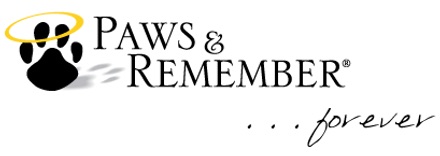

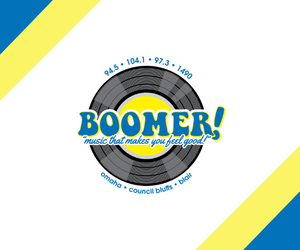
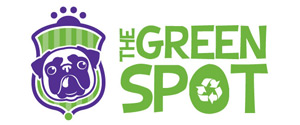


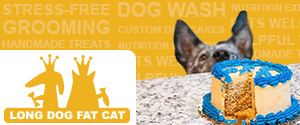






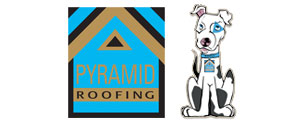

You must be logged in to post a comment Login